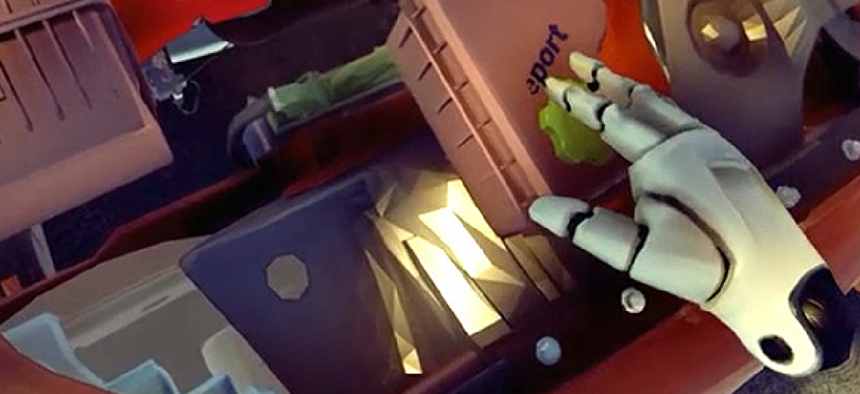Rehabilitating prisoners in a virtual world

Virtual Rehab hopes to bring virtual reality educational and rehabilitation experiences to prisoners.
Researchers are actively exploring virtual reality’s potential to treat illnesses and enhance learning. Both the Army and the Department of Veterans Affairs use it to help treat post-traumatic stress disorder and other conditions, including chronic pain. In December, the Department of Education launched the EdSim Challenge, a $680,000 competition to design the next-generation of educational simulations that strengthen career and technical skills.
Another promising field for VR applications may be in corrections.
Raji Wahidy, the founder of the startup Virtual Rehab, wants to reduce recidivism by using VR to provide both educational and rehabilitation experiences to prisoners so they can better cope with life after prison.
Virtual Rehab is currently focusing on four different types of VR content: general education, such as math and science; vocational training for skills, such as welding and auto repair; psychological rehab for addressing mental illnesses; and correctional rehab tackling sex offenses, family violence and living skills.
Wahidy told GCN the company is working on a prototype that will be viewed with an HTC Vive headset, featuring scenarios that test both soft and hard skills using both animation and actors in 360-degree video environments.
“This is the closest [prisoners] can get to real life within a room environment,” Wahidy said.
For the educational and vocational classes, Virtual Rehab will buy the curriculum it will adapt for VR. The company will work with a mental health professional on the psychological rehab content and is in talks with the U.S. Department of Corrections about guidelines for the correctional rehab content.
One mental illness this technology could address is alcoholism, Wahidy said, by teaching prisoners to make the right decisions: Do they enter a bar? Do they order alcohol once in the bar? Do they get into a heated exchange with an aggressive individual? The VR experience gives the user response options for different circumstances. How the prisoner responds generates a score, which Wahidy said could be used in a parole hearing.
While prisoners are in the VR experience, a corrections officer will be able to follow along throughout the interactions.
This is content that can’t be recreated on 2D screens, Wahidy said. Besides the visual experience, Virtual Rehab will be using technology that allows users to feel the environment through vibrations. Being in a VR environment makes people feel obligated to interact with their surroundings, he said.
Wahidy wants to be clear that he is not trying to bring video games to prisoners, a common reaction he said he gets. “This whole project is focused on education and rehabilitation,” he said. But he does say the feeling of freedom these experiences can provide could benefit the prisoners.
Virtual Rehab is talking with corrections facilities in the United States and is in partnership discussions with organizations in Canada and Europe.
Virtual Rehab’s trial campaign launches on March 1, with a full launch planned for later this year.
NEXT STORY: Leveraging the wisdom (and ignorance) of crowds





